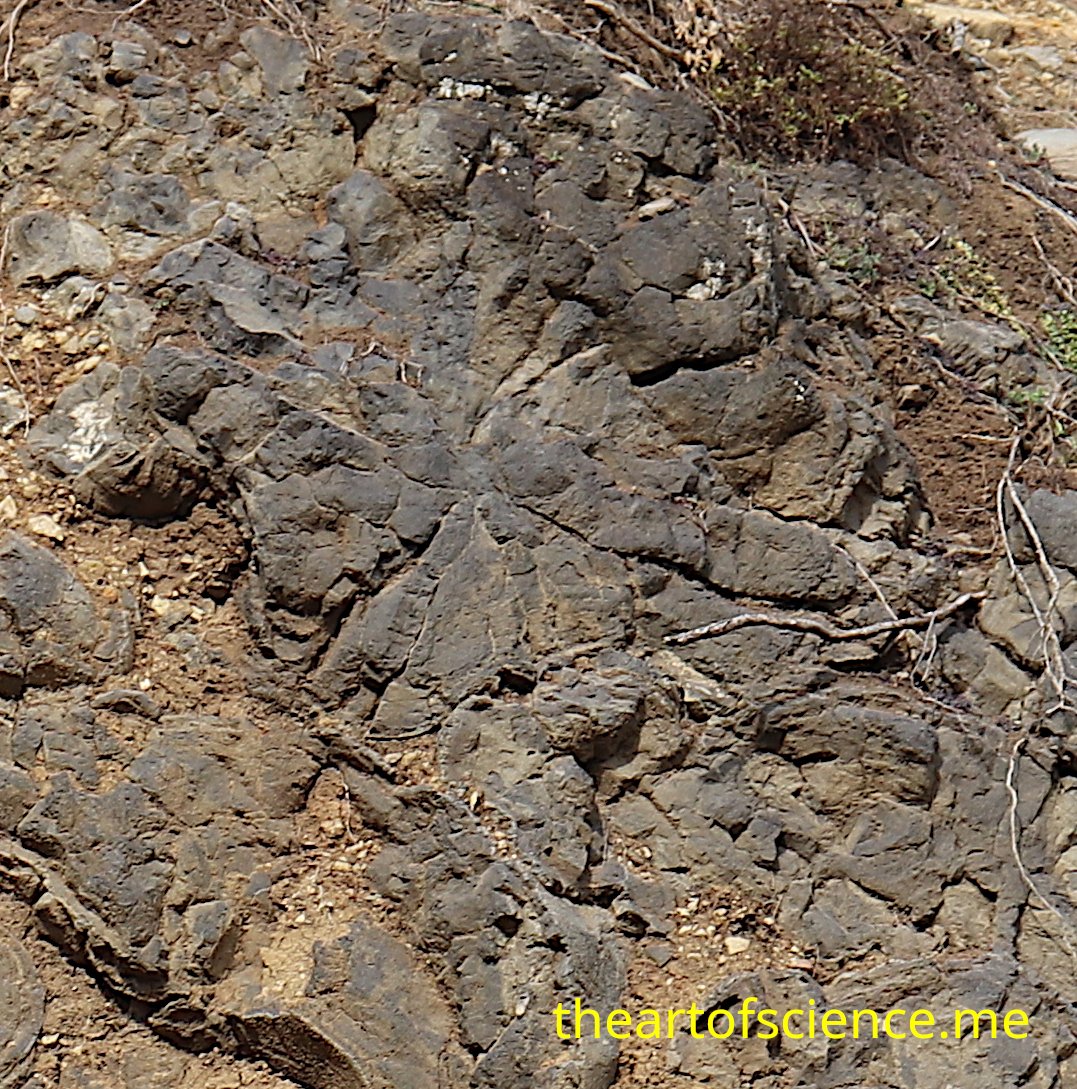Collins Bay with pillow lavas and a large block of conglomerate.
The south end of Collins Bay and the Conglomerate Block’s Story.
Cobbles, boulders, and gravel forming the conglomerate block in the picture are on a journey that began in the early Miocene.
Seventeen million years ago, they littered an ancient beach similar to the one we see today. Shaken by earthquakes, they tumbled down steep slopes inside a submarine canyon before settling on the pillow lavas. The rock debris slowly cemented under the immense pressure of overlying rocks to form a conglomerate.
Fast-forward to recent times when a large conglomerate block eventually dislodged from the present-day cliffs. It continued its journey down the canyon slopes before stopping to have its picture taken.
The ground is still moving.
Before Cyclone Gabriel in 2023, the climb to view the pillow lavas was easy. Like myself, the ground is unstable. I took these pictures from the safety of the beach.
The south end of Collins Bay.
The pillow lavas extruded onto an ocean floor two kilometers below the surface.
Needs a closer look.
Lava squeezed from the mantle like toothpaste from a tube onto the ocean floor.
A closer look.(centre)
In cross-section a pillow-shaped lava flow crawls into the distance as another climbs over it, finding space to relieve the enormous pressure squeezing it from a fissure in the crust. This seventeen-million-year-old snapshot records a violent volcanic event frozen in time and a cold ocean.
What happened?
16.8 million years ago, to be exact, the ocean glowed red and lit up the night sky like a Muriwai sunset. Vast volumes of molten basalt poured out of the mantle to form new crustal material. Red hot lava at 1200 degrees Celsius chilled instantly in contact with the cold ocean to form a thin skin. Pressure continually forced lava through the chilled leading edge of the flow. Pillow-shaped lava streams snaked along the ocean floor over and around each other as they escaped from the mantle. A photographer on the surface with waterproof gear could have recorded the event as tubes of molten lava progressed along the ocean floor. Red lines of free-flowing lava flickered, extinguished by the cold water only to light up again as fresh material burst through thin water-chilled margins.
A thin chilled margin is just visible around the pillow lava.
The interior of the lobe cools and contracts more slowly. Radial cooling joints form from the outside as the cooling lava contracts.
Up close.
Flowing pillows tumble over and around each other.
references.
Lava and Strata. A guide to the volcanoes and rock formations of Auckland. Lloyd Homer, Phil Moore and Les Kermode in association with the NZ Institute of geological and Nuclear Sciences.
Lower Miocene Geology and Sedimentary History of the Muriwai Te Waharoa Coastline, North Auckland, New Zealand. B. W. Hayward Department of Geology, University of Auckland, New Zealand.
Ancient Undersea Volcanoes: A guide to the geological formations at Muriwai West Auckland.












